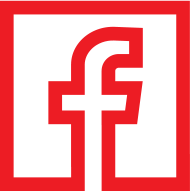Church of St. Procopius
Add to plannerProkop Church is an important cultural monument listed in the list of immovable cultural monuments of the Ministry of Culture of the Czech Republic.
Details
Opening hours
NE 8.00-13.00 h
Contact
Roman Catholic parish of St. Vojtěch nám. J. A. Alise 284 261 01 Příbram VI - Březové Hory
robert.cieszkowski@seznam.cz
+420 318 622 203
+420 722 430 984
www.farnostbrezovehory.eu
Information
Nearest public transport stop
March. Mountains, nám. J. A. Alice
Related places
Gastro nearby
At first there was a wooden bell tower, probably from the 16th century. A part of the oldest buildings of miners' houses and also some shafts grew in its surroundings. The original bell from 1580 has been preserved and is on display in the Mining Museum Příbram na Březových Horách. In 1724 the foundation stone for the construction of a stone chapel was laid here. In 1733 it was partially completed and dedicated to the patron saint of miners, St. Prokop. However, the condition of the chapel was not satisfactory and deteriorated over the years. In 1879 it was rebuilt. The original chapel was largely demolished and the present Prokop Church was built. The reconstruction was carried out in the pseudo-Romanesque style. The church is single-nave, rectangular with a square tower in the western facade. A new enlarged nave with two entrances was added to the presbytery, which was preserved originally. A small sanctus tower was built above the presbytery. A sacristy was added on the west side. The main altar of St. Procopius is classical from the early 19th century with the image of St. Procopius. The side altar of St. Barbara is rococo. In 1879-1889, the Prokop Church was at its greatest glory, as it was the only church in the rapidly growing Birch Mountains. The famous mining parades were directed to it. At the beginning of the 20th century, however, the church began to deteriorate. After the events of February 1948, the church ceased to function completely. It was not repaired until after 1989. Today, thanks to the renewed Prokopská pilgrimage, it becomes, at least for a few days a year, the centre of social and religious events. The church is used for ceremonies by the Orthodox Church. Near the church there is an ancient birch forest called Koráb with two large crosses, a stone one from 1831 and a cast iron one from 1859.











